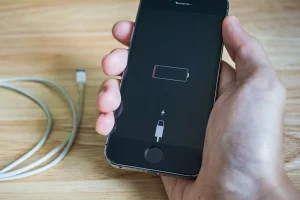As business operations rely heavily on smartphones, smartphone charging issues can significantly hinder productivity. A dead battery or malfunctioning charger can lead to missed calls, delayed responses, and lost opportunities. But what’s behind these frustrating incidents? Is it a hardware malfunction, a software glitch, or something more sinister? By exploring the root causes of common smartphone charging issues, business owners can identify ways to minimize downtime and maximize device longevity. The real question is, what proactive measures can be taken to prevent these issues from arising in the first place and ensure seamless business operations?
Key Takeaways
- Identify and address common charging issues, such as hardware malfunctions, software glitches, and faulty adapters, to minimize downtime.
- Implement smart charging habits, like avoiding overcharging and using original chargers, to safeguard device longevity and performance.
- Pinpoint and correct battery drain culprits, including malfunctioning apps and location services, to optimize device performance.
- Ensure a safe charging environment by keeping devices away from flammable materials and maintaining properly functioning power outlets.
- Educate employees on proper charging practices to promote seamless business operations and maximize productivity.
Understanding Charging Inconveniences
Frequently, smartphone users experience frustrating charging inconveniences that hinder their ability to stay connected and productive, making it necessary for business owners to understand these common smartphone charging issues to minimize downtime and maximize efficiency. By recognizing these problems, businesses can implement effective solutions, ensuring seamless communication and best performance. This understanding is vital for success.
Causes of Common Smartphone Issues
Behind the frustrating experiences of common smartphone charging issues lie a multitude of complex causes, ranging from hardware malfunctions to software glitches and environmental factors. Loose connections, worn-out charging ports, and faulty adapters can all contribute to charging difficulties. Additionally, software bugs, outdated operating systems, and conflicting apps can also hinder the charging process, resulting in Common smartphone charging problems.
Identifying Battery Drain Culprits
As the causes of common smartphone charging issues are multifaceted, it is equally important to identify the culprits behind battery drain to guarantee efficient charging and peak device performance. Several factors contribute to battery drain, including malfunctioning apps, location services, and screen brightness. By pinpointing these culprits, business owners can take corrective measures to optimize their devices’ performance and extend battery life.
Overheating and Power Surges Risks

Malfunctioning charging systems and poorly maintained power outlets can expose devices to overheating and power surges, risks that can compromise the integrity of a smartphone’s internal components. This can lead to:
- Permanent damage to your device’s battery and circuitry
- Data loss and corruption
- Even fires or electrical shocks in extreme cases, putting you and others at risk
Smart Charging Habits for Success
To mitigate the risks associated with overheating and power surges, adopting smart charging habits is important to safeguard the longevity and best performance of your smartphone. By avoiding overcharging, using original chargers, and keeping devices away from flammable materials, you can minimize common smartphone charging issues and secure seamless business operations.
Frequently Asked Questions
Can I Use Any Charger or Cable for My Smartphone?
‘No, not all chargers or cables are compatible with your smartphone. Using an incompatible charger or cable can damage your device, so using the original or a certified compatible accessory is crucial to guarantee safe and efficient charging.’
How Often Should I Calibrate My Smartphone’s Battery?
Calibrating your smartphone’s battery is recommended every 3-6 months to maintain accuracy. This involves letting the battery drain to 0% and then charging it to 100% to guarantee the battery gauge remains reliable and efficient.
Do Smartphone Cases Affect Charging Speed or Efficiency?
Smartphone cases can indeed impact charging speed and efficiency, as certain materials or designs may obstruct the flow of electrical current or hinder heat dissipation, leading to slower charging times or reduced battery performance.
Can I Charge My Smartphone in Extreme Temperatures?
Charging your smartphone in extreme temperatures can be detrimental to its battery health. Avoid charging in temperatures below 32°F (0°C) or above 95°F (35°C), as this can cause permanent damage to the lithium-ion battery’s performance and lifespan.
Will Turning off GPS Improve My Smartphone’s Battery Life?
Turning off GPS can improve your smartphone’s battery life by reducing power consumption, as GPS relies on cellular and Wi-Fi connectivity, which drain battery resources; disable GPS when not in use to conserve energy and prolong battery life.
Conclusion
Optimizing smartphone charging practices is essential for businesses to maintain operational efficiency. By acknowledging the causes of common charging issues, businesses can implement targeted solutions to minimize downtime. Adopting smart charging habits, such as using original chargers and avoiding overcharging, can greatly reduce device malfunctions. By prioritizing device longevity, businesses can guarantee uninterrupted connectivity and productivity, ultimately leading to improved overall performance.
You May Also Love to Read: Choosing a Reputable Realtor for Optimal Commercial Buildings






